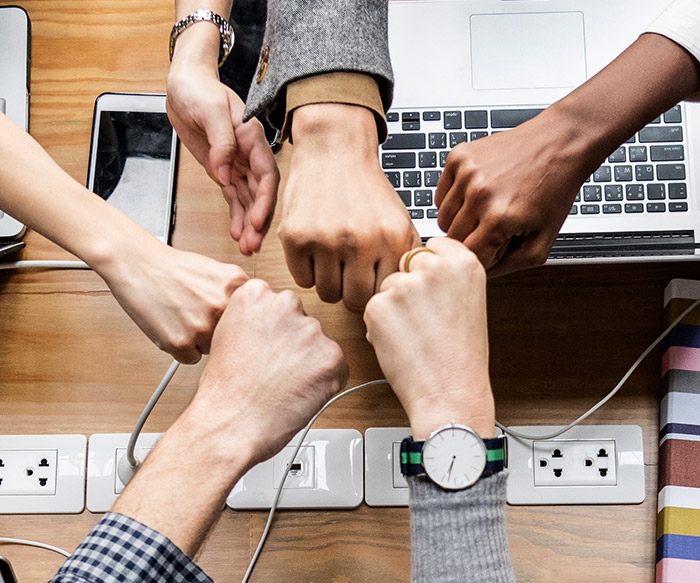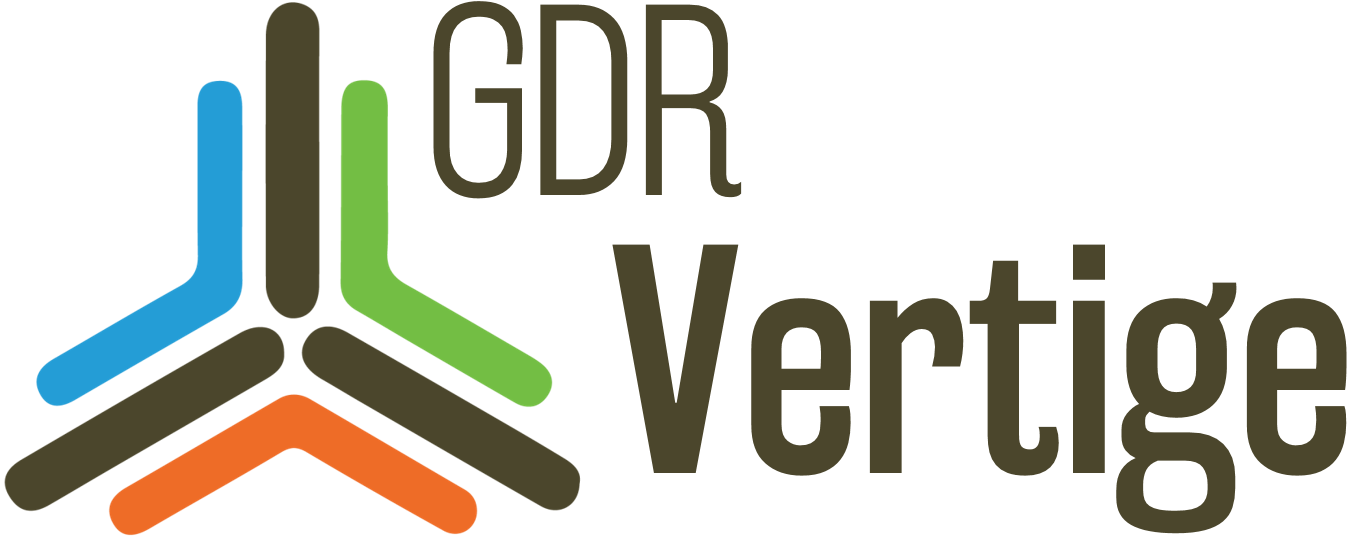The mission of the GDR Vertige
The mission of the GDR Vertige is to stimulate exchanges and collaborations between the different components of the neuro-otology community (field of study and treatment of balance disorders and vertigo) in order to:
- Stimulate the acquisition of new knowledge on vestibular physiology and pathophysiology
- Encourage the development of new diagnostic tools, more efficient medical devices and more specific and effective antivertigo drugs
- Improve the visibility of scientific and clinical projects with funding partners
- Sensitize young clinicians and researchers to medical needs


Vestibular pathology, its societal impact and its therapeutic management
Characteristics and prevalence
Vestibular pathologies are characterized by impairment of posturo-locomotor and vestibulo-ocular functions. Their origin can be central (affecting central vestibular networks) or peripheral (affecting the vestibule, there equilibrium organ located in the inner ear). They are characterized by unpredictable and often recurring episodes of vertigo, associated with postural imbalances at rest or when moving. These attacks are often accompanied by dizziness and nausea, as well as difficulty in fixing the gaze during movement. This set of symptoms significantly impacts the most basic activities of daily living. The psychological trauma linked to the acute vertigo crisis, together with the phobia of its recurrence, associated with the physical incapacity that accompanies vestibular disorders can have significant socio-professional consequences, accompanied by cognitive disorders which can lead to psychological and social isolation (Yardley et al. 1992; Jacob & Furman 2001).
The prevalence of vestibular pathologies is very high. In France, complaints of vertigo represent the third reason for consultation with the general practitioner (Gozlan, 2014) and is the subject of 300,000 consultations per week, or more than 15 million consultations per year (Toupet et al. 2002, 2004). It is estimated that nearly 25% of these vertigo have a vestibular origin. In Europe as in the USA, vestibular pathologies represent 1% of hospital emergencies (Newman-Toker et al. 2007,2008) being a significant portion of health expenditure (Tehrani et al. 2013). A study carried out at John Hopkins Hospital in Baltimore (USA) on more than 5,000 healthy volunteers, reports vestibular dysfunctions in more than 1/3 of adults over 40, 2/3 over 60 and 85% over 80 years (Agrawal et al. 2009; for review Chabbert 2012; 2013). Another study carried out in France by the University Hospital of Nancy on nearly 3,000 adult volunteers demonstrates an annual prevalence of vestibular instabilities or dizziness in nearly 60% of the people questioned (Bisdorff et al. 2013).
Therapeutic management & medical need
Depending on the severity of the pathology, the therapeutic management of the vertigo patient is carried out on the first line by general practitioners or emergency physicians, who diagnose and manage the symptoms related to the acute attack of vertigo and its posturo-locomotor, vestibulo-oculomotor and neurovegetative correlates. Further treatment is generally carried out by vestibular physiotherapists, who accompany patients over months or years, through vestibular rehabilitation approaches supporting the restoration of balance and posture. Long-term care of dizzy and unstable patient is now opening up to new players such as orthoptists, psychologists, sophrologists, as well, as other aetiopaths. Improvement of the vertigo patient therapeutic management is currently at the heart of a debate involving the various professionals of vertigo. The patient’s “therapeutic path” often remains extremely chaotic due to the lack of protocols well established and recognized by all, and on the other hand, by the insufficient knowledge on vestibular pathology, on its neurophysiological characteristics and clinical correlates. The medical field of neuro-otology is thus characterized by an important medical need for a better understanding of the etiology and neurophysiological support of vestibular damage, more targeted and more efficient clinical protocols and approaches, as well as a more adapted organization of the vertigo patient management throughout the duration of the pathology, and addressing its various manifestations.

Bringing together the Neuro-otology community
One of the characteristics of the neuro-otology community is its multidisciplinarity. The various professional components involved in fundamental research on vestibular pathologies or in the care of the vertigo patient, had little opportunity to discuss their practices, however very complementary, and did not share a federative structure shaped for training and interdisciplinary exchanges. The action to bring together the neuro-otology community began in the context of the creation of the GDR Vertige by gathering 18 clinical teams from the main French University hospitals, 10 research teams from the main research Centers (CNRS, INSERM, INRS, CEA), and 3 industrial partners. Over the four years that followed its creation, the research group was enriched by the entry of 6 new clinical teams, 3 research teams, 3 professional associations and 3 new industrial partners (see GDRV Members panel) . These various partners actively support the actions undertaken by the GDR Vertige through financial support and active participation in the Thematic School and the Annual Colloquium. It is thus a real action to bring together multidisciplinary research forces in the field of vertigo that has been achieved through the creation of the GDR Vertige. Several foreign ENT teams regularly participate in the various activities offered by the GDR vertige (see Partnerships panel). Several of these teams are also partners in projects under development. Several tools, such as the GDR Vertige logo and the GDR Vertige website have been put in place to strengthen the gathering of the neuro-otology community through a common display.
Bring visibility: website and logo
Due to its multidisciplinary origin and its geographical dispersion, the French community of neuro-otology did not have until 2015 a real national or international visibility allowing to figure out all the research, training or animation activities carried out by its different components. A website specific to GDR Vertige (https://gdrvertige.com) was set up in the first half of 2015 with the aim, on the one hand, of listing all of the French clinical and hospital centers involved in vertigo management, the different research teams, private partners (pharma and biotech), learned societies, national and local associations that invest in listening and long-term monitoring of the dizz patient, and on the other hand, to improve the dissemination information to the entire neuro-otology community about new research advances, collaborative projects, funding requests, conferences, national and international congresses and workshops. In its first version, the website was designed in French in order to facilitate exchanges with the French multidisciplinary community. An English version will be implemented in 2021. Since its launch in June 2015, the number of visitors to the website has experienced constant growth which does not seem to be slowing down. In 2019, the total number of visits exceeded 9,000, for more than 4,000 individual entries. Most visitors come from France, but we also noted an increase (nearly 10%) in visits from different countries including Belgium, Morocco and USA. This confirms the strong appetite of the neuro-otology community for a source of information and training that meets the needs of the various actors who contribute to the care of the vertigo patient.
The GDR Vertige logo is now nationally and internationally recognized. It is systematically displayed on all postings of conferences and training courses given in France. It also supports various international initiatives such as the Annual Colloquium of the Moroccan Society of Vertigo (SMEVE) 2018 and the Colloquium of the International Society of Neuro-otology (SIO) 2018. During the second term, we plan to award to the most promising research projects of our community which will be selected by a commission of scientific and clinical experts.
Stimulating the community: the Summer School and the Annual Symposium
Once a year, the GDR VERTIGE Annual Symposium brings together members of the GDR, as well as various multidisciplinary players in the neuro-otology community. Over two days, various events (plenary conferences, round tables, workshops, exhibitions) are organized with the aim of promoting exchanges and collaborations around major issues regarding research on vestibular pathophysiology and the management of dizzying patients. The organization of the annual GDR Vertige Symposium (choice of themes, speakers, method of operation) is handled by a multidisciplinary organizing committee renewed annually. For more details see the “Annual Meeting” panel in the “What we do” section of the home page.
Promote the establishment of multidisciplinary research projects
During the 2015-2018 quadrennial, several research projects were initiated between research teams, clinicians, vestibular physiotherapists and industrials. Some of these projects have given rise to scientific publications.
